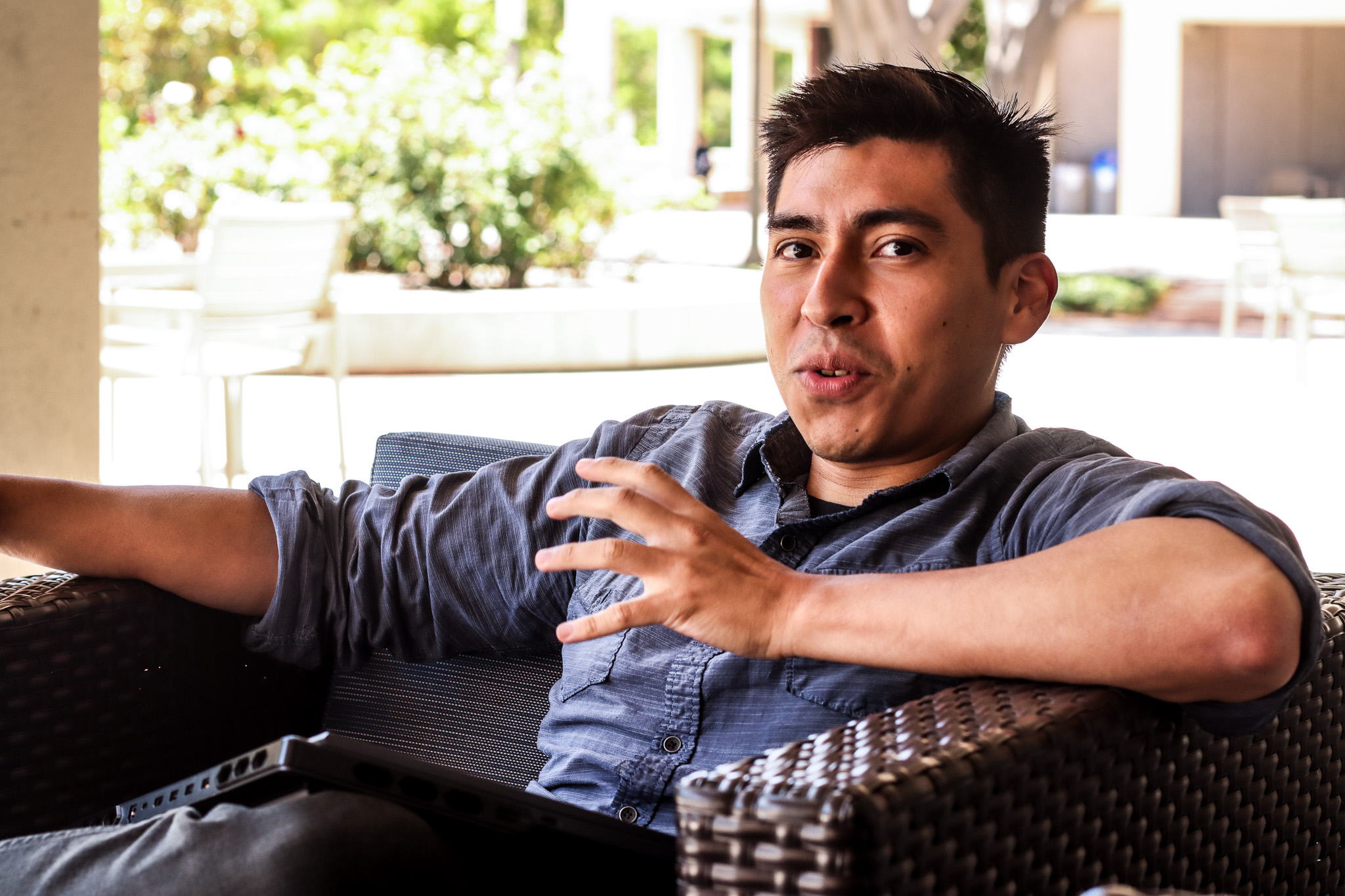Steven Crisostomo: The making of a quantum scientist

Steven Crisostomo tells the story of his path into quantum science at UC Irvine. "I grew up in New York, I did all my education there, but I didn’t really have a sense that science was something that you could do as a career," he said. "But I enjoyed learning.
Quantum scientists study the physics of what happens at the atomic scale, where things like electrons behave in ways that appear to contradict the laws of physics.
It’s in the quantum realm that Steven Crisostomo, who just received his Ph.D. studying condensed matter physics in the group of Professor Kieron Burke in the UC Irvine Department of Physics & Astronomy, spends his time. Crisostomo defended his dissertation earlier this month – the culmination of six years of graduate research into quantum physics coupled with work to foster an interdisciplinary culture of collaboration and fellowship in his department.
When he was younger, however, Crisostomo never pictured himself as a scientist, much less a quantum scientist. In fact, if you wind the clock back to his teenage years, you were more likely to find Crisostomo in art galleries in his native New York than near a laboratory.
Crisostomo loved visiting a gallery called the Hudson Valley Museum of Contemporary Art (HVMOCA). As a middle schooler, he was involved in an after-school program run by HVMOCA and became a volunteer for the program when he was in high school.
Meanwhile, “I wasn’t a great student,” said Crisostomo, who struggled to see the value of attending his high school classes and often skipped school. “I just didn’t like the environment of the public school system. I got bored very easily, and I got to a point where I was just skipping so much school that they were threatening to keep me back a grade.”
It was at HVMOCA that Crisostomo found the intellectual stimulation he yearned for. “I love talking to artists, I love ideas, and that was something I wasn’t getting at school, so the gallery was crucial for me in my early years,” he said.
Crisostomo started going back to school and kept volunteering at HVMOCA, and the artists and owners of the gallery started encouraging him to go to college. “That was one of the most important things I’ve ever done, volunteering at that gallery,” he said.
Neither of his parents had gone to college, so applying was unfamiliar territory for Crisostomo. “My family didn’t have any background in higher education,” he said. “My parents were supportive, but I didn’t know what it meant to pursue science as a career.”
But his friends at the gallery kept nudging him. “It took a lot of prodding from other people to go and do it,” he said. “It was the insistence of them to pursue college.”
His parents were also adamant about making sure Crisostomo had a better life than the ones they had.
“My mom was a teacher’s assistant for the school district, so she would always be very deliberate with exposing us to a lot of different books and art,” said Crisostomo. “My dad doesn’t have a degree – he never finished the equivalent of high school back in Guatemala. But they both made sure me and my brother always had what we needed.”
So, Crisostomo enrolled at Hunter College in New York City, where he kept developing his math skills—something he realized he had a knack for in high school. His undergraduate advisor introduced him to quantum science and, ultimately, to UC Irvine Professor Kieron Burke.
Here at UCI, Crisostomo has worked to understand and predict the properties of electrons in materials.
“Predicting the properties of chemicals and materials is a huge challenge,” said Crisostomo, who explained that understanding how electrons behave is key to accurately predicting material properties. “The behavior of electrons is crucial for knowing how chemistry works and for knowing how to make interesting materials that are relevant for specific applications.”
Historically, it’s been difficult to understand how electrons behave in a material. To address the issue, Crisostomo turned to something called Density Functional Theory, which helps predict electron behavior within materials.
“I can essentially use non-interacting physics to fish out all the things I care about. It transforms the problem,” said Crisostomo, who helped found an informal group in his department called ‘Condensed Chatter,’ which encourages graduate students to meet over coffee to discuss their research.
Crisostomo’s research results, described in journals like Physical Review Letters, could one day aid in quantum technology and energy storage research.
"Steven joined our group and quickly established himself as very eager to learn, and always keen on investigating tough problems,” Burke said. “In his time here, he has grown tremendously, both academically and as a professional scientist. He has also broadened his interests, including considerable outreach activities.”
After UCI, the path Crisostomo started back in New York will continue as he starts a postdoctoral position at UC Santa Barbara alongside Professor Vojtech Vlcek with the support of a prestigious NSF MPS Ascend Postdoctoral Fellowship.
“It’s been a joy and an honor to serve as his Ph.D. advisor, which has meant lots of really good arguing, as he really knows his stuff,” said Burke. “We will really miss him in the group, mostly for his expertise, but also for his boundless interest in all things physics and his humor. Our loss is UCSB's gain.”
Looking back, Crisostomo remembers everything that helped get him here, including HVMOCA and the artists who encouraged him. He sees the time he spent mingling with artists as the beginning of his path into quantum science, because, in his quantum materials research, Crisostomo sees math as his own creative paintbrush.
But, most of all, Crisostomo sees his parents.
“They're why I’m so passionate about what I do here, and I want to be sure that I honor that,” Crisostomo said. “My education is essentially the bulk sum of my family’s sacrifices.”
